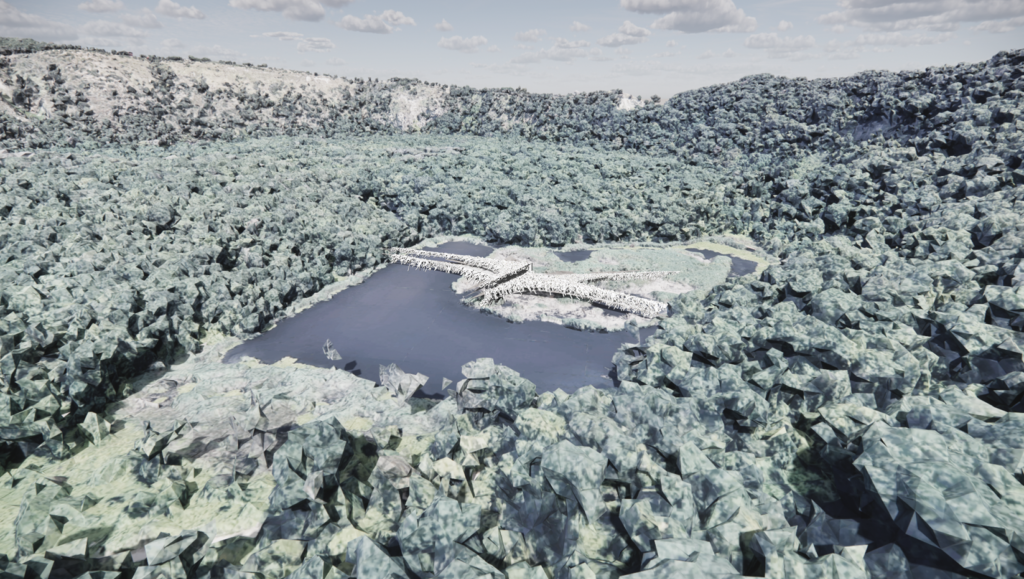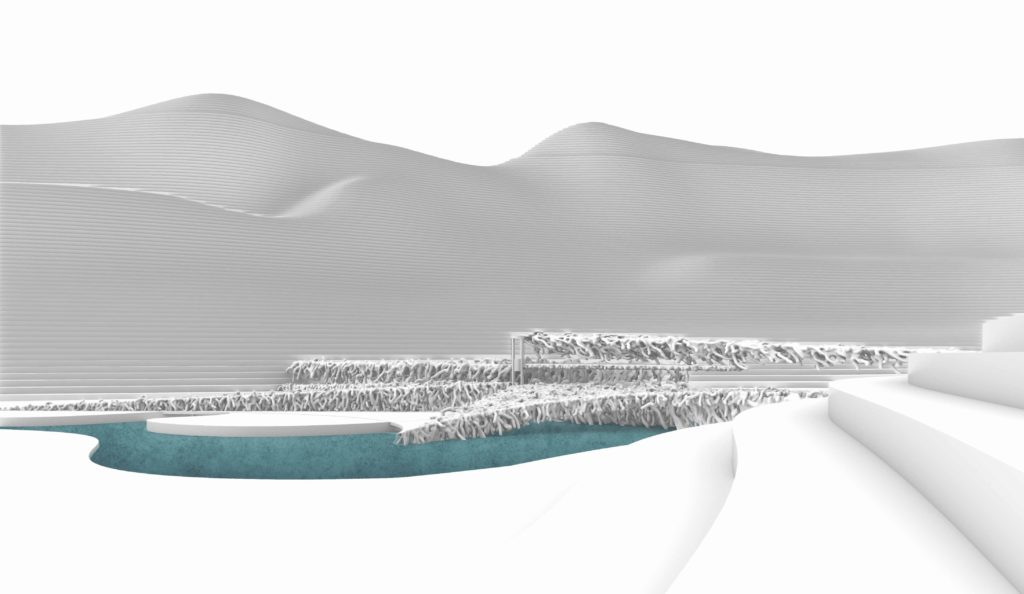Design Description: This design attempts to find interesting possibilities for architectural design through an experimental approach. Particle systems can simulate the trajectory and direction of biological activity. By artificially adding some constraints and particle behavior guidance to the site analysis, an architectural form is finally formed from the bottom up by relying on the spontaneous behavior of organisms.

The project is located in Pozzuoli, Italy, a wild nature reserve rich in biological species. As the only water source in the reserve, Lake Agnano has attracted much attention. The Wildlife Museum is also located here. It is located on the small island in the center of the lake and connects the small island with the surrounding area.



The project tries to take inspiration from the natural growth of plants. Design is a bottom-up form-finding process with ecological logic. Through the analysis and observation of this area, we can see that Lake Agnano is the only water source of this area (it is also the lowest point), and the surrounding creatures tend to gradually approach Lake Agnano. We simply abstract the creatures from the surroundings into five curves in different directions, and form a basic skeleton according to their trends. These skeletons will provide the basis for the growth of particles in next step (as shown in the sketch).


Firstly, some experimental studies were done on particle behavior. We preset the trajectory of particles, the birth point, the target point (food) and some obstacles. Starting the simulation and we find that the particles will follow the path to find food and avoid obstacles. We record the action trajectory of each particle, and then convert these trajectories into some volumes, finally we will get some random space-like shapes.

Using a similar logic, we try to grow particles on the already obtained skeleton. We set the center point as the target point, and the five directions are the birth points of the particles, and at the same time use some obstacles to replace the functional space required in the building. When the simulation is started, these particles will bypass obstacles and leave space inside the building, forming a relatively random entity.



The results of each simulation are relatively random. We selected one of the forms to develop into a building, and later added elements such as floors, stairs, and elevators to rationalize it. Finally our result is a wildlife exhibit that is organic, close to nature, and blending with its surroundings.



